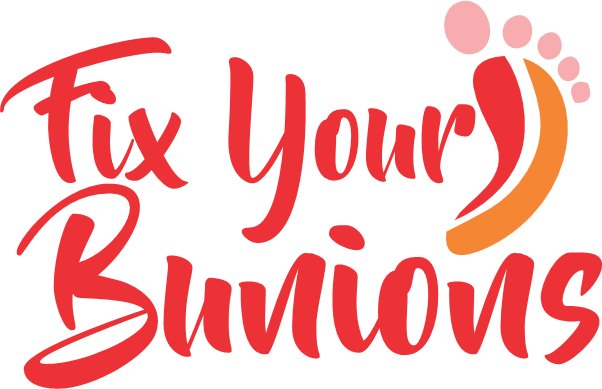Bunion pain can be debilitating, affecting your ability to walk, stand, or even wear your favorite shoes. Fortunately, there are several effective, non-surgical treatments that can alleviate pain, improve mobility, and slow the progression of bunions. By implementing these treatments into your daily routine, you can experience significant relief and avoid or delay the need for surgery.
Immediate Pain Relief Techniques
1. Ice Therapy
Applying ice to the bunion can reduce inflammation and provide immediate pain relief.
- How to do it: Wrap an ice pack in a cloth and place it on the bunion for 10-15 minutes.
- Frequency: Repeat 2-3 times a day, especially after long periods of standing or walking.
2. Epsom Salt Foot Soaks
Soaking your feet in warm water with Epsom salt can relax muscles, reduce swelling, and soothe pain.
- How to do it: Dissolve ½ cup of Epsom salt in a basin of warm water and soak for 15-20 minutes.
- Why it works: The magnesium in Epsom salt reduces muscle tension and inflammation.
3. Over-the-Counter Pain Relievers
Nonsteroidal anti-inflammatory drugs (NSAIDs) like ibuprofen or naproxen can provide quick relief.
- Dosage: Follow the instructions on the packaging.
- Caution: Avoid long-term use without consulting a healthcare professional.
Long-Term Bunion Management Strategies
1. Wear Proper Footwear
Choosing the right shoes can significantly reduce bunion pain and prevent further progression.
- Wide toe box: Allows your toes to spread naturally without crowding.
- Low heels: Limit heel height to 1 inch or less to reduce pressure on the forefoot.
- Cushioned soles: Provide extra comfort and shock absorption.
Tip: Avoid narrow, pointy shoes and high heels, which can exacerbate bunion pain.
2. Use Orthotics or Shoe Inserts
Orthotic devices help correct foot misalignment and relieve pressure on the bunion.
- Custom orthotics: Prescribed by a podiatrist for optimal support.
- Over-the-counter options: Gel pads and arch supports for immediate relief.
3. Toe Separators and Bunion Pads
Toe separators help keep the big toe aligned, while bunion pads provide cushioning and protection from shoe friction.
- Why they work: Prevent additional pressure and reduce irritation.
- When to use: During daily activities or when wearing shoes.
Foot Exercises to Strengthen and Stretch Muscles
Regularly performing foot exercises can improve flexibility and reduce tension around the big toe joint.
1. Toe Stretches
- How to do it: Gently pull your big toe forward and backward to improve joint mobility.
- Duration: Hold each stretch for 10-15 seconds and repeat 3-5 times.
2. Towel Curls
- How to do it: Place a towel on the floor and use your toes to scrunch it toward you.
- Benefit: Strengthens the muscles in the arch of the foot.
3. Marble Pick-Up
- How to do it: Use your toes to pick up small objects, like marbles, and place them in a container.
- Purpose: Improves dexterity and strengthens the toes.
Protective Solutions: Flipping Bling Bunion Covers
Flipping Bling bunion covers provide a layer of cushioning and protection, making them an ideal solution for those seeking comfort without compromising style.
- Why they work: Reduce friction and irritation while blending seamlessly with sandals and flip-flops.
- Tip: Use them daily, especially when wearing open-toed footwear.
Anti-Inflammatory Diet for Bunion Relief
Certain foods can help reduce inflammation and support overall foot health.
Foods to Include:
- Omega-3 fatty acids: Found in salmon, mackerel, and walnuts.
- Leafy greens: Spinach, kale, and broccoli.
- Berries: Blueberries, strawberries, and raspberries.
- Turmeric and ginger: Natural anti-inflammatory spices.
Foods to Avoid:
- Processed foods
- Refined sugars
- Excessive alcohol
Success Stories: How Non-Surgical Treatments Have Helped Others
Maria’s Journey:
Maria, a retail worker, experienced severe bunion pain after long shifts. By switching to bunion-friendly shoes and incorporating daily foot exercises, she saw significant improvement in her pain levels and mobility.
Tom’s Success:
Tom, a recreational runner, used custom orthotics and Flipping Bling bunion covers to manage his condition. He was able to continue running without needing surgery and reduced his bunion-related discomfort.
Conclusion
Bunions don’t have to disrupt your life or lead directly to surgery. By adopting these effective non-surgical treatments, you can relieve pain, improve mobility, and maintain an active lifestyle. Start incorporating these solutions today and take control of your foot health for the long term.

